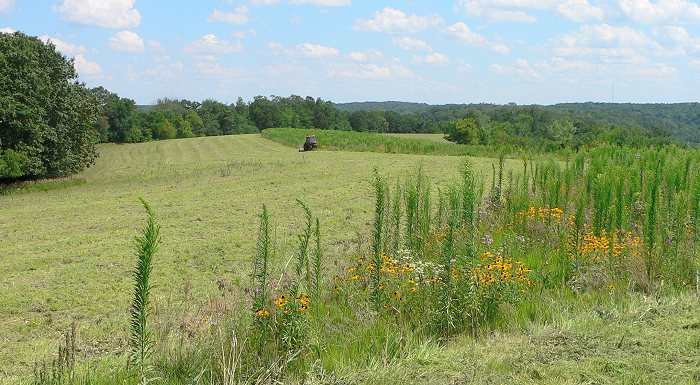[To see photos and stories of this prairie in other years, go to the links on the main Buffalo Ridge Prairie page.]
This is the prairie’s second year, so we’ve let it grow up without mowing. There are lots of prairie flowers blooming – Indian Paintbrush bloomed in June, and now there’s Monarda, Black-eyed Susan, Hoary Vervain, and Yellow Coneflower. The grasses are doing well too – especially Junegrass and Prairie Brome.
This photo was taken in June – Indian Paintbrush (Castilleja coccinea) is blooming and many other prairie plants are growing.
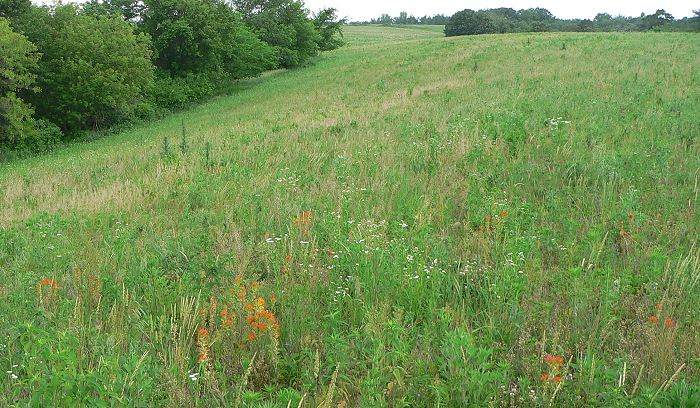
Here’s a closeup of some of the prairie flowers – Indian Paintbrush, Junegrass (Koeleria cristata) and Prairie Brome (Bromus kalmii).

There are still plenty of weeds – mostly Canadian Horseweed (Conyza canadensis), and Lamb’s Quarters (Chenopodium sp.) – which at least are native weeds, and Curly Dock (Rumex crispus). I’ve been cutting and removing the Curly Dock, since that seems to help control it. This is an area on the west facing slope with big clumps of Curly Dock.
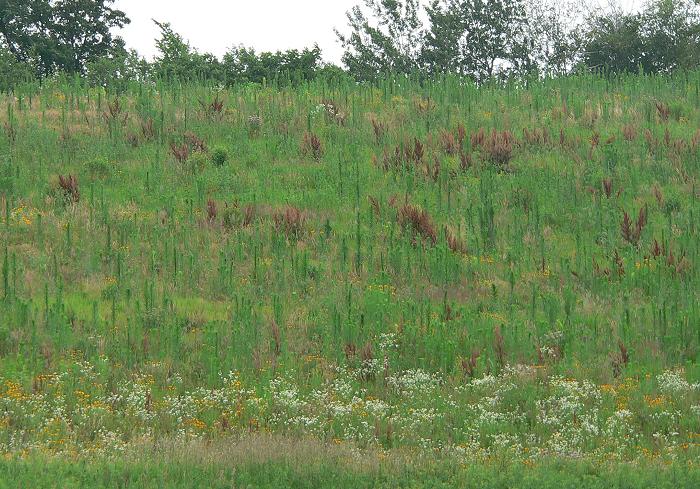
Here’s a similar area after I’ve cut and removed most of the Curly Dock.
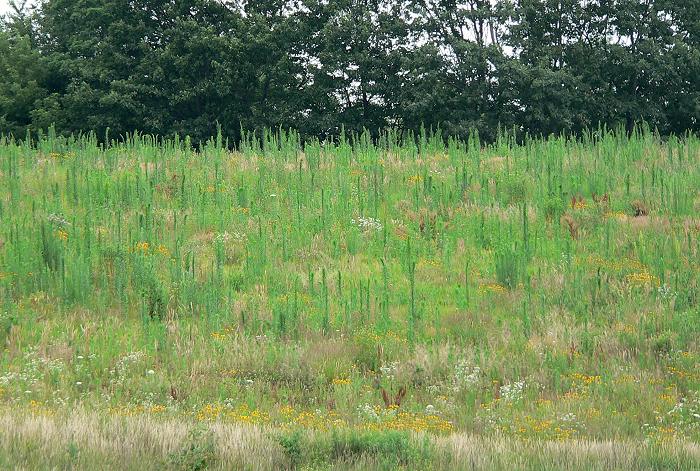
We’ve talked about mowing the whole prairie, but decided to leave it for now. Hopefully the prairie plants will start to crowd out the weeds in a year or two – especially if we let all the prairie plants make seeds.
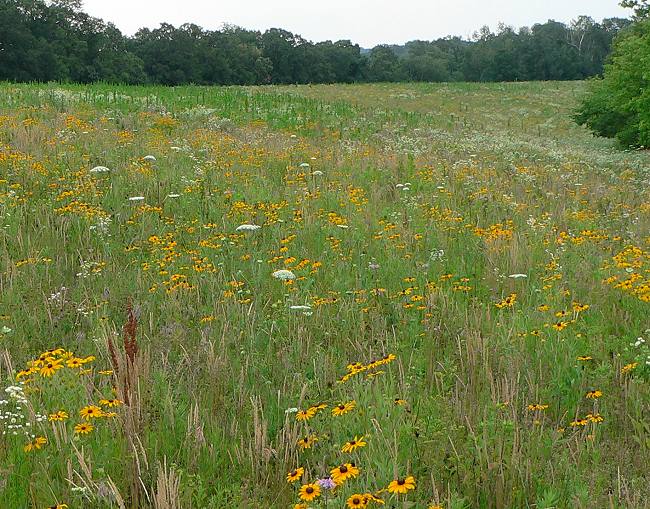
Here’s a view of the prairie looking north.
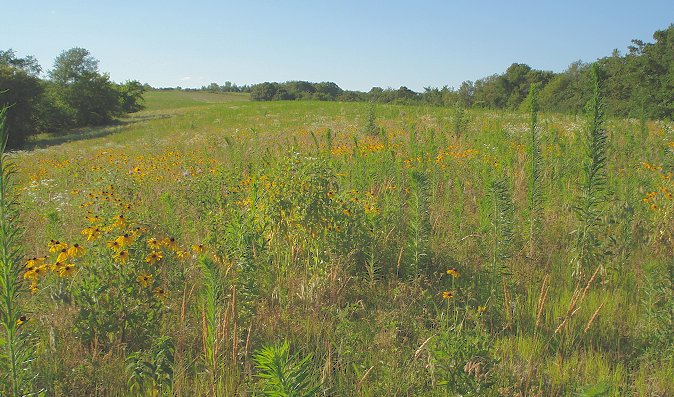
And here you can see some of the flowers that are blooming now – in early July.
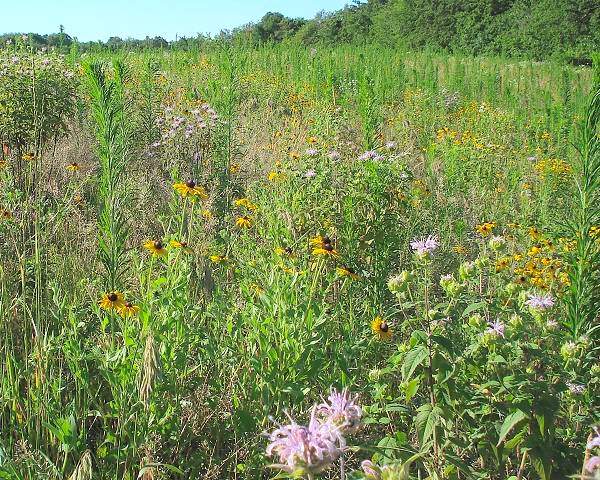
This is the first prairie planting where I tried planting a mix of seeds of aggressive prairie plants around the edges of the prairie. The edges are where most of the weeds are, and where we have the hardest time controlling them. So I planted a seed mix of Black-eyed Susan, Monarda, Yellow Coneflower, Wild Rye, Big Bluestem and Indiangrass. The plants are coming up now, and the edges are beautiful. I think it will really help keep down the weeds. The right side of this photo shows the strip of flowers growing along the edge of the prairie.

We finally did mow the prairie at the end of July. There were just too many weeds. Most of them were Canadian Horseweed (Conyza canadensis), a native weed that likes disturbed places. We hope that by mowing, we’ll reduce the number of plants next year.
